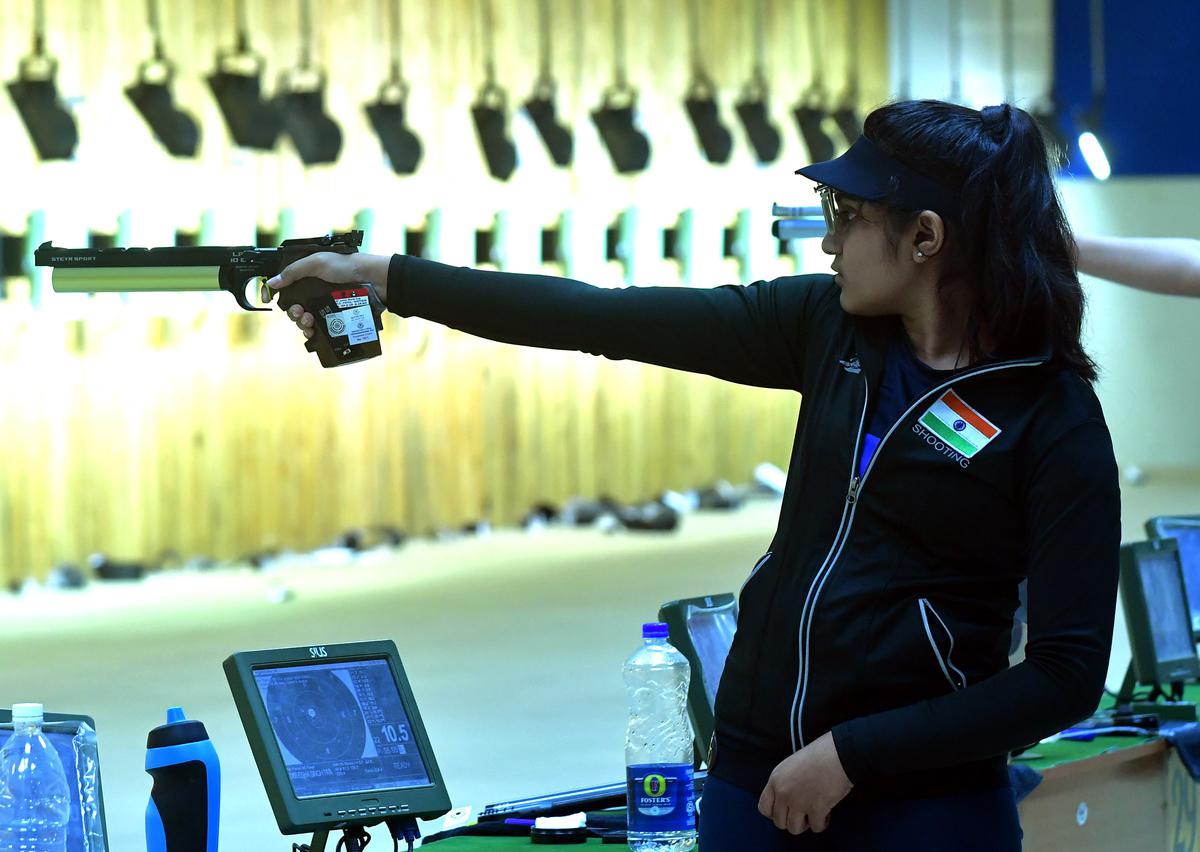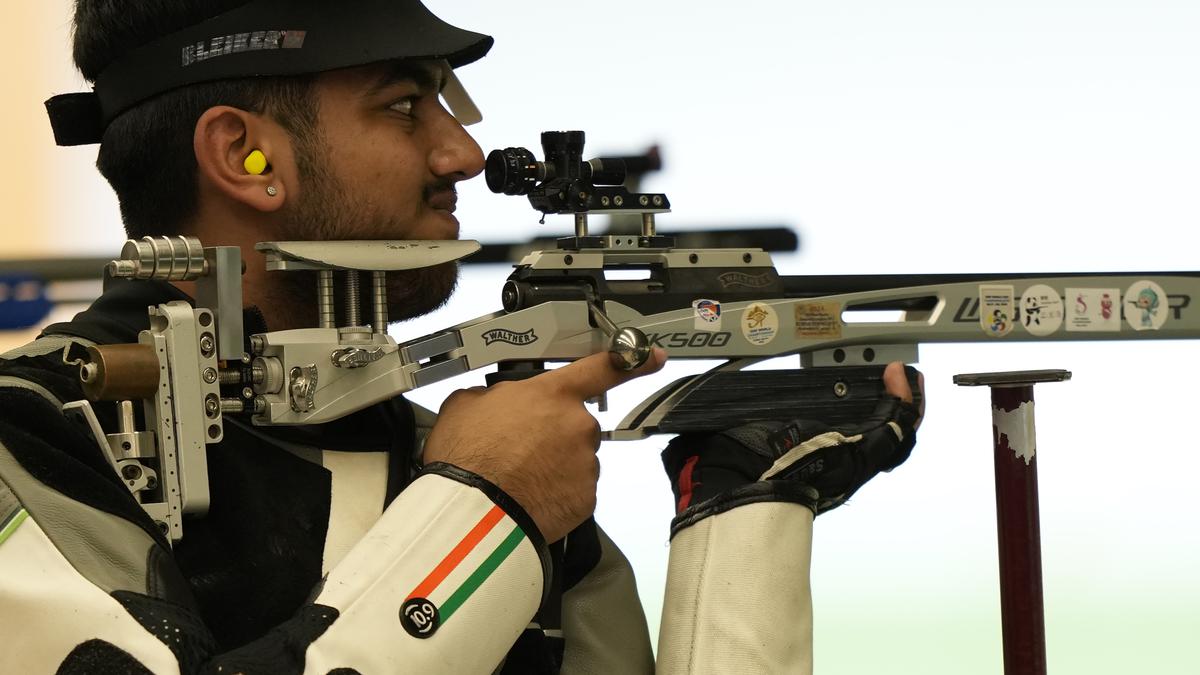Indian shooting in 2024: Time to sing the redemption song
In about six months, the curtain rises for the ultimate spectacle in France. The final act of Indian shooting’s redemption arc, where 340 of the world’s best descend onto Chateauroux for the final boss battle.
The COVID-induced shorter Olympic cycle may be a reason why the memories of the Tokyo debacle seem fresh like it happened only yesterday. While the takeaways from most sports were largely positive, the shooters were left red-faced. They had come back empty-handed, even though India was able to send 15 shooters, its largest-ever Olympic contingent, to the Japanese capital.
The following years were bittersweet. Amid multiple rule changes and coaching setup overhauls, among other developments, a few names disappeared from scorecards for various reasons. Saurabh Chaudhary, Abhishek Verma, Apurvi Chandela, and Rahi Sarnobat are not household names anymore. The likes of Esha Singh, Rudrankksh Balasaheb Patil, Sift Kaur Samra, Sarabjot Singh, Tilottama Sen, and Ashi Chouksey took over.
Shooters like Manu Bhaker and Divyansh Singh Panwar went into recovery mode, with the media hullabaloo having exacted a heavy toll. But the duo seems to have returned to the scheme of things just in time.
The Hangzhou high
If the Asian Games numbers are anything to go by, the shooters are in a much better place. However, one has to keep in mind that 11 of Hangzhou’s 22 medals came from same-gender team events, a privilege the shooters won’t have at the Summer Games. So, there will not be any room for complacency.
There was that singular moment of genius, though. One that would rank very high even if achievements across all sports in 2023 are taken into account. It was the individual world record set in Hangzhou by Sift. In an exhilarating finish to the women’s 50m rifle 3 positions final, the 22-year-old notched up 469.6 after taking 15 shots each in the kneeling, prone, and standing positions. Her mark was a considerable upgrade — 2.6 points — over the previous world record held by British star Seonaid McIntosh. China’s Qiongyue Zhang, the eventual silver medallist, finished 7.3 points behind!

Booking the ticket: Esha Singh won India’s 15th Paris Olympics quota with a gold medal in the women’s 10m Air Pistol final in the Asian Olympic Qualifier in Jakarta recently.
| Photo Credit:
S. MAHINSHA
Booking the ticket: Esha Singh won India’s 15th Paris Olympics quota with a gold medal in the women’s 10m Air Pistol final in the Asian Olympic Qualifier in Jakarta recently.
| Photo Credit:
S. MAHINSHA
Memorable moments
There were other performances as well that would be remembered for a long time to come. India started 2023 on a high, topping the medal charts at the Cairo World Cup in February. The country won seven medals (four gold and three bronze), with second-placed Hungary only managing three (two gold and one silver). Aishwary Pratap Singh Tomar and Rudrankksh brought out their A-game.
The stakes rose when archrival China entered the fray at the Bhopal World Cup. It was the first time the city was playing host to an ISSF championship, having built a new final hall at the Madhya Pradesh State Shooting Academy.
Sarabjot (10m air pistol) may have won India’s only gold medal of the competition, but Bhaker stole the spotlight when she struck bronze, her first ISSF World Cup medal in almost two years.
Only days ahead of the World Championship, the newly-elected ISSF board changed the format of the finals, but that didn’t deter Mehuli Ghosh from scoring 634.5 in the qualification round of the 10m air rifle — unimaginable a few years ago — and eventually winning the bronze medal. A Paris quota was the icing on the cake. Shiva Narwal and Esha Singh won the 10m mixed team gold to become the only Indian world champions in an Olympic category in 2023.
The final countdown
This year would be all about reeling in the remaining Olympic quota places. The National Rifle Association of India already has 17 quotas as of writing, a new record, with Vijayveer Sidhu being the latest to pocket the second 25m rapid-fire pistol slot alongside Anish Bhanwala in the recently concluded Rifle and Pistol Asian Championship in Jakarta. In trap and skeet, India has so far managed to win only two of the maximum eight possible Olympic quota places.
The country could very well fill up the vacant slots from two more competitions: the Asian Shotgun Championship in Kuwait between January 12–22 and April’s final Olympic Qualification Championship in Rio (Rifle and Pistol) and Doha (Shotgun). While on paper, India can grab all 24 quotas, it will be a tall task.
Incredible feat: Sift Kaur Samra won India’s first individual gold medal at the last Asian Games in Hangzhou, topping the women’s 50m rifle 3 positions final with a new world record score of 469.6.
| Photo Credit:
A. M. FARUQUI
Incredible feat: Sift Kaur Samra won India’s first individual gold medal at the last Asian Games in Hangzhou, topping the women’s 50m rifle 3 positions final with a new world record score of 469.6.
| Photo Credit:
A. M. FARUQUI
Before the Paris 2024 entry deadline on July 8, the International Olympic Committee will also have allocated the final spots based on Universality Places and Qualification Ranking for the Olympic Games (QROG).
New selection policies
While quotas never belonged to the athlete except for those awarded through QROG, it used to all but confirm an Olympic ticket the last time around owing to additional ‘merit points’ that came along with it. This year, however, new selection policies have brought its value down.
The quota holders will now fight for a seat on the Paris flight with the top three national shooters (who have participated in a minimum of two ISSF championships) and ‘deemed quota holders’ during a series of domestic qualifying competitions starting in May in New Delhi and Bhopal.
‘Deemed quota holders’ are those who missed out on a place because the designated two spots in the respective athlete’s discipline had already been accounted for.
The best three scores of a total of four trials will be considered for calculating a Final Average Score (FAS). As per the amended criteria, those who have earned the quotas in firearm events (50m rifle and 25m pistol) will get two bonus points added to their FAS, while airgun events (10m air rifle and air pistol) will grant you only one point.



